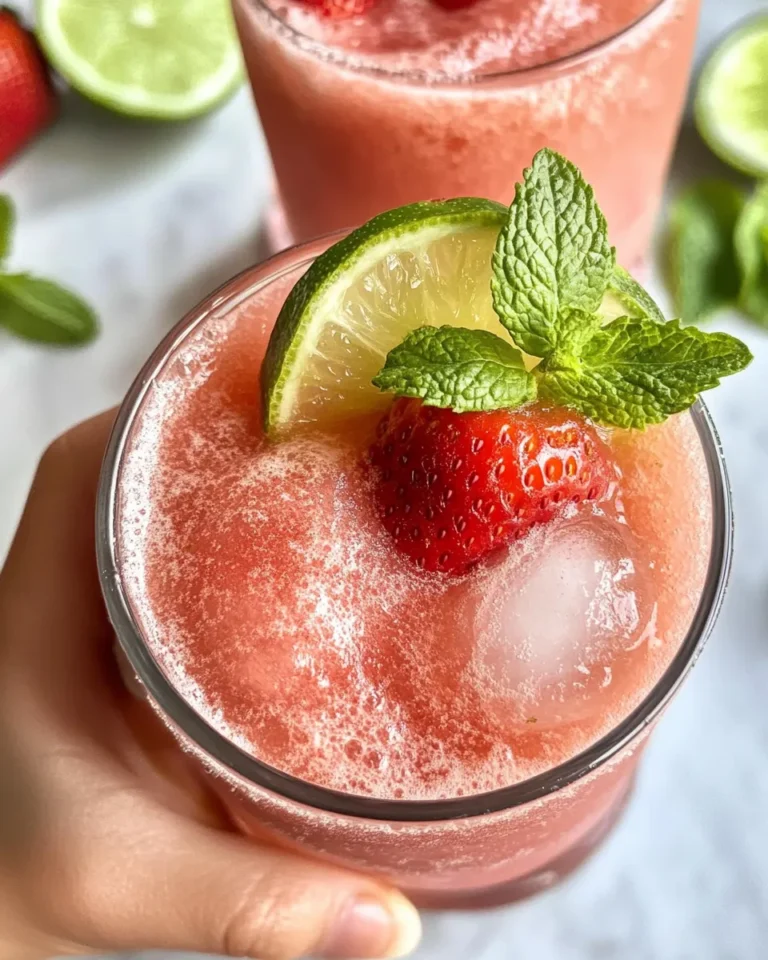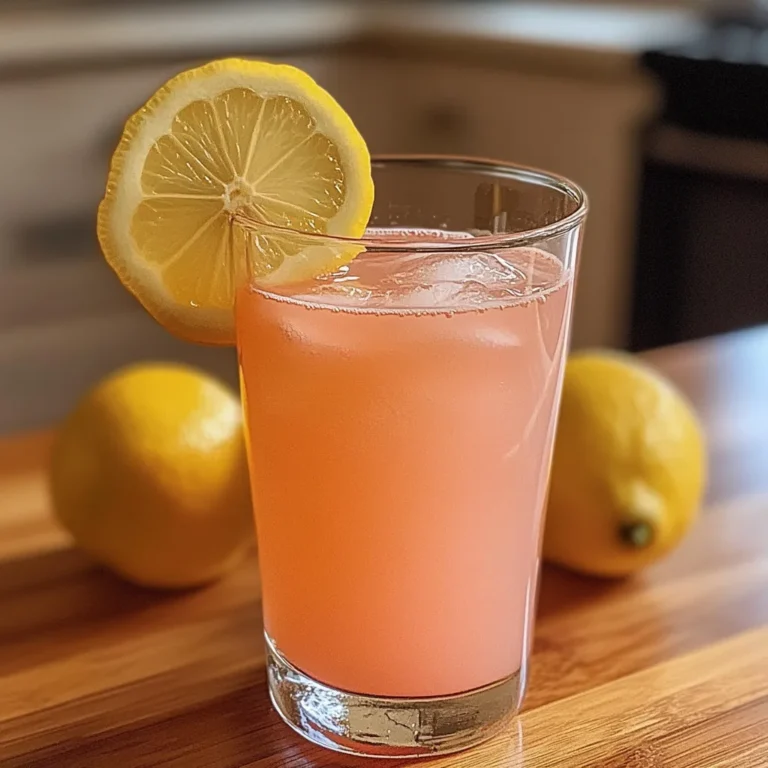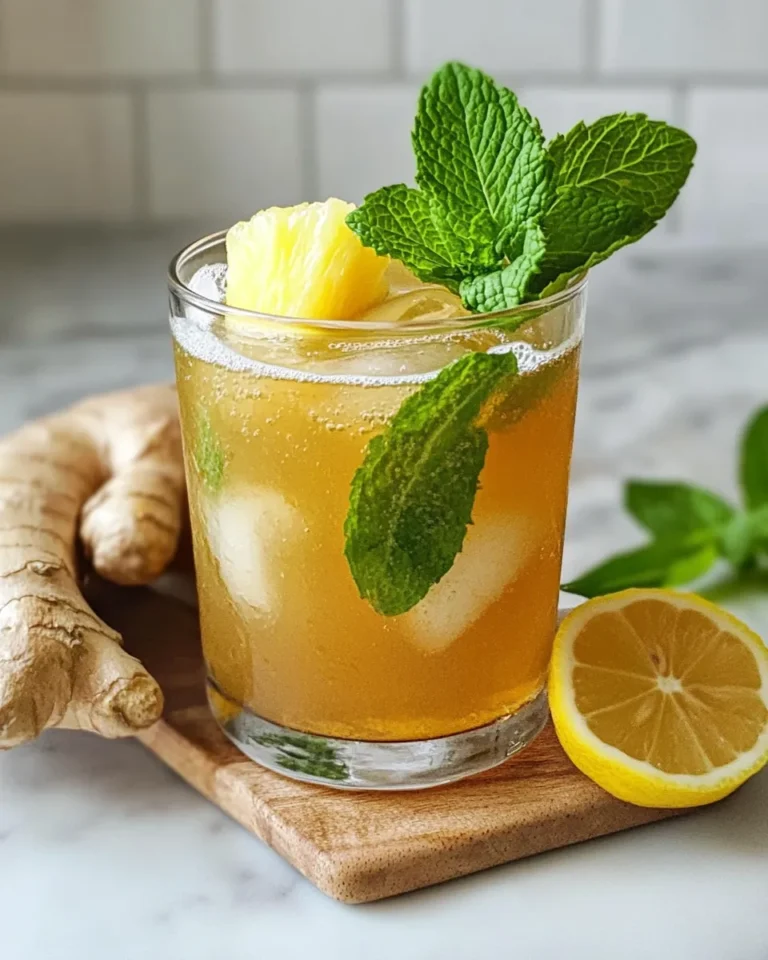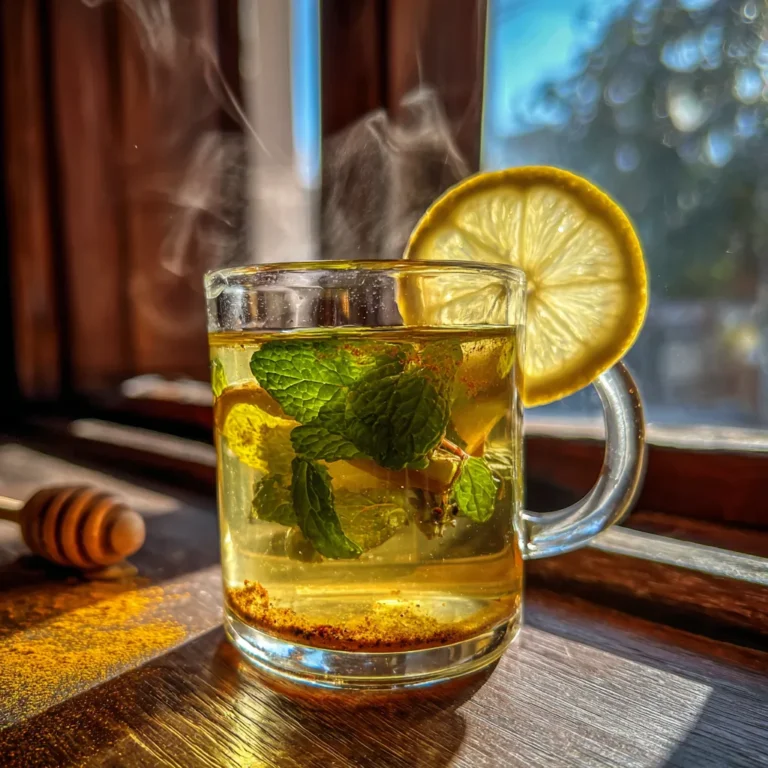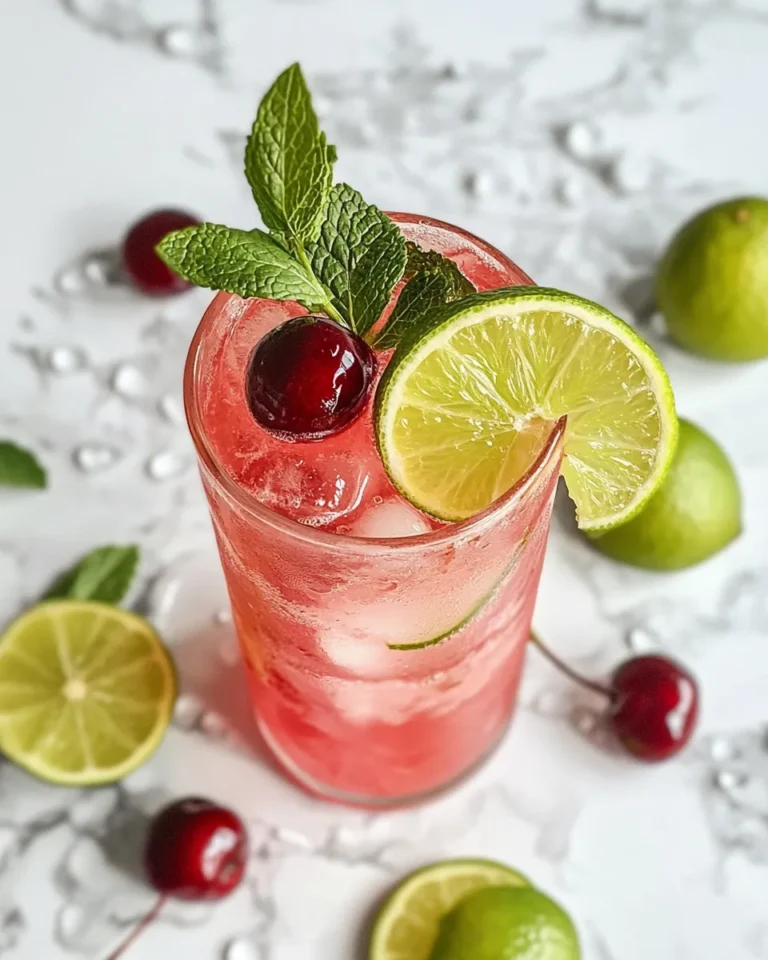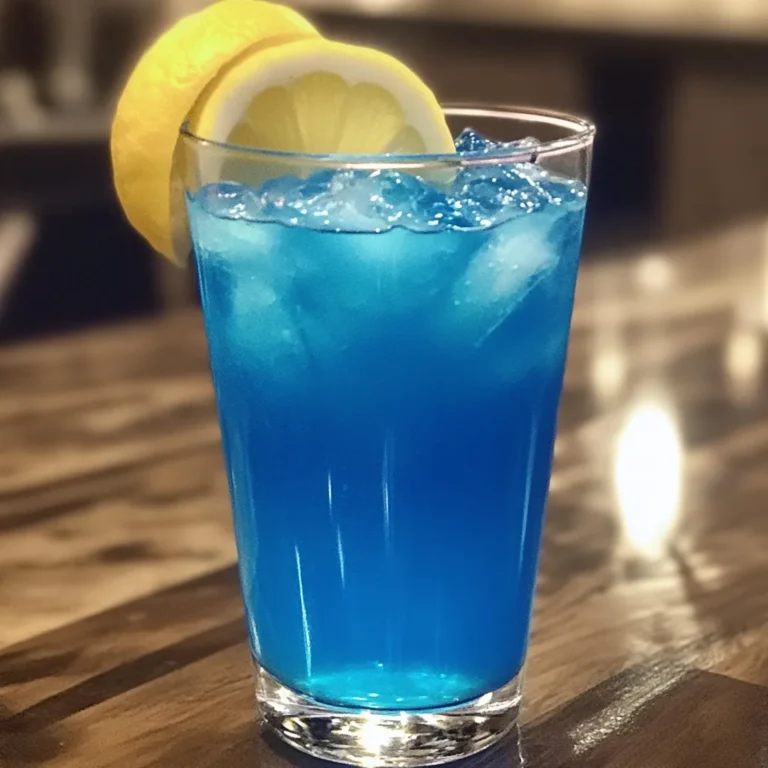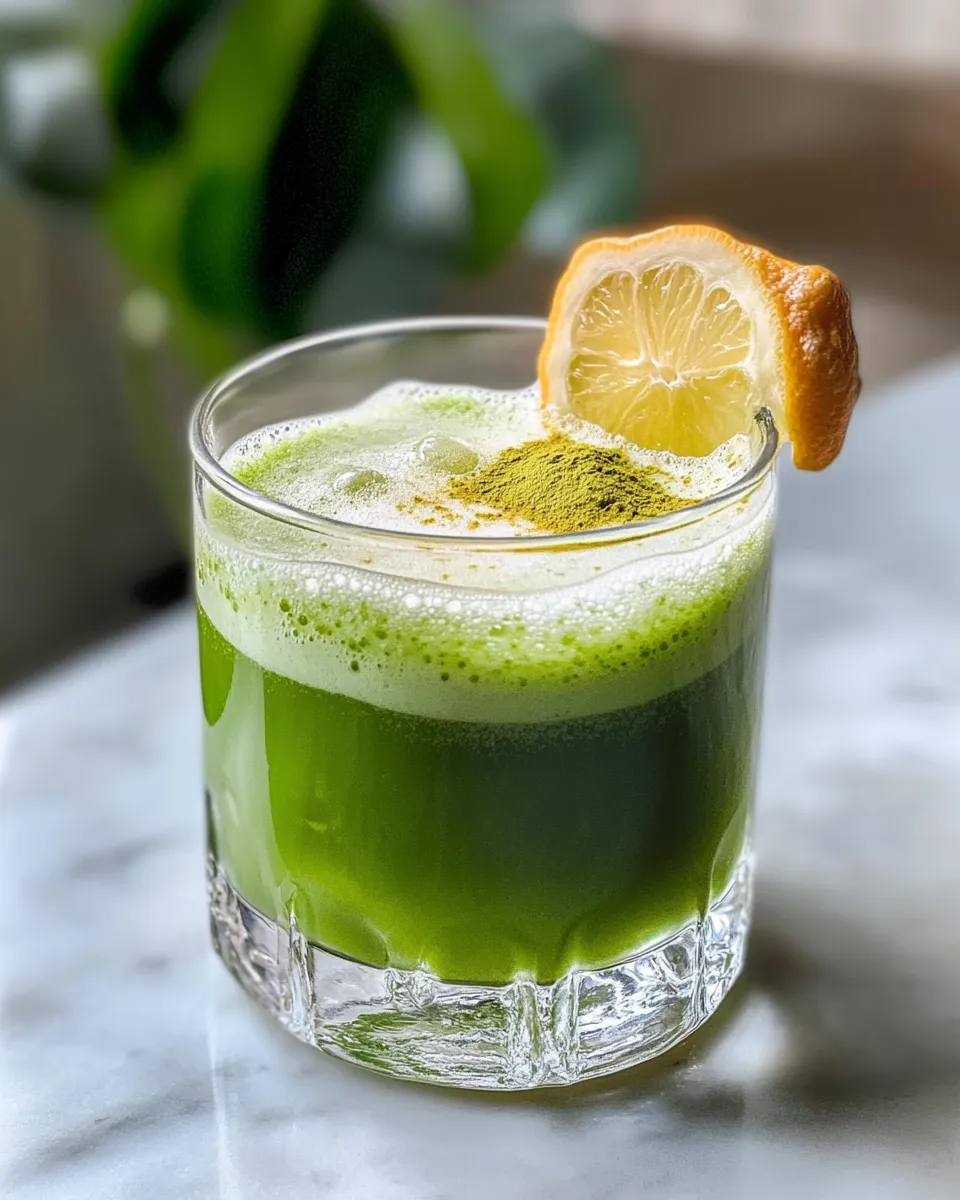
Japanese Mounjaro recipe devotees swear the first sip feels like sunrise over a Kyoto bamboo grove—silky matcha foam, a bright yuzu spark, and a subtle mineral hum that steadies the body while lifting the mind. This expanded guide brings you every detail: cultural context, ingredient science, fool-proof methods, creative twists, sustainability tips, and troubleshooting tricks, so your homemade brew rivals any wellness café in Tokyo.
Why You’ll Love This Japanese Mounjaro Recipe
A well-made Japanese Mounjaro recipe does three remarkable things at once. First, ceremonial-grade matcha provides calm alertness thanks to its unique combo of L-theanine and moderate caffeine. Second, a whisper of pink Himalayan salt replenishes sodium, potassium, and magnesium lost during workouts or long desk days, turning ordinary hydration into functional hydration. Third, fresh ginger and yuzu offer gentle digestive support and mood-brightening citrus oils, making each sip feel like self-care in a mug. When you weave this drink into your daily routine—morning mindfulness, pre-workout, or afternoon reboot—you gain a grounded ritual that tethers healthy intentions to an unmistakably delicious reward.
You may also like: Natural Mounjaro Tea Recipe.
How to Make The Japanese Mounjaro Recipe
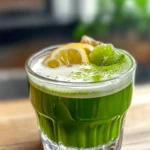
Japanese Mounjaro Recipe for Weight Loss
Ingredients
Main Ingredients
- 1 cup filtered water swap for coconut water to boost electrolytes (optional)
- 3 slices fresh ginger thinly sliced
- 1/4 teaspoon pink Himalayan salt fine-grain
- 1/2 teaspoon fresh yuzu zest sub Meyer-lemon + grapefruit zest if needed
- 1 teaspoon ceremonial-grade matcha powder sifted
- 1 teaspoon fresh yuzu juice
- 1–2 teaspoons raw honey (optional) sweeten to taste or omit for keto
Instructions
- Hot method: In a small saucepan, combine the filtered water, ginger slices, and pink Himalayan salt. Warm over medium-low heat until faint steam appears — do not boil.
- Stir in the yuzu zest, cover, and steep off-heat for 2 minutes.
- Sift the matcha into a chawan, add 2 tablespoons of 175 °F (80 °C) water, and whisk briskly until frothy.
- Strain the ginger-yuzu infusion into the matcha, swirl gently, add the yuzu juice, and sweeten with raw honey if desired. Serve immediately.
- Cold-brew method: Place ginger slices, yuzu zest, and salt in a 1-liter jar. Whisk matcha with ¼ cup cool water until smooth; pour into the jar.
- Fill with chilled filtered (or coconut) water, seal, shake once, and refrigerate 8–10 hours. Strain over ice, add yuzu juice, adjust sweetness, and enjoy.
Equipment
- Bamboo whisk (chasen)
- Small Saucepan
Notes
Origins & Cultural Context
While the viral phrase “Mounjaro recipe” is new, the foundations of a Japanese Mounjaro recipe rest on centuries-old tea culture. Matcha was whisked by Zen monks in the 12th century to stay focused during long meditation sessions. Yuzu, a cold-hardy citrus, became a winter solstice bath tradition for its uplifting aroma. Ginger root traveled the Silk Road to Japan in the Heian era, prized for warming “qi.” By marrying these time-honored elements with modern electrolyte science, the Japanese Mounjaro recipe bridges ancient ritual and contemporary wellness without gimmicks or synthetic boosters.
Ingredient Deep Dive
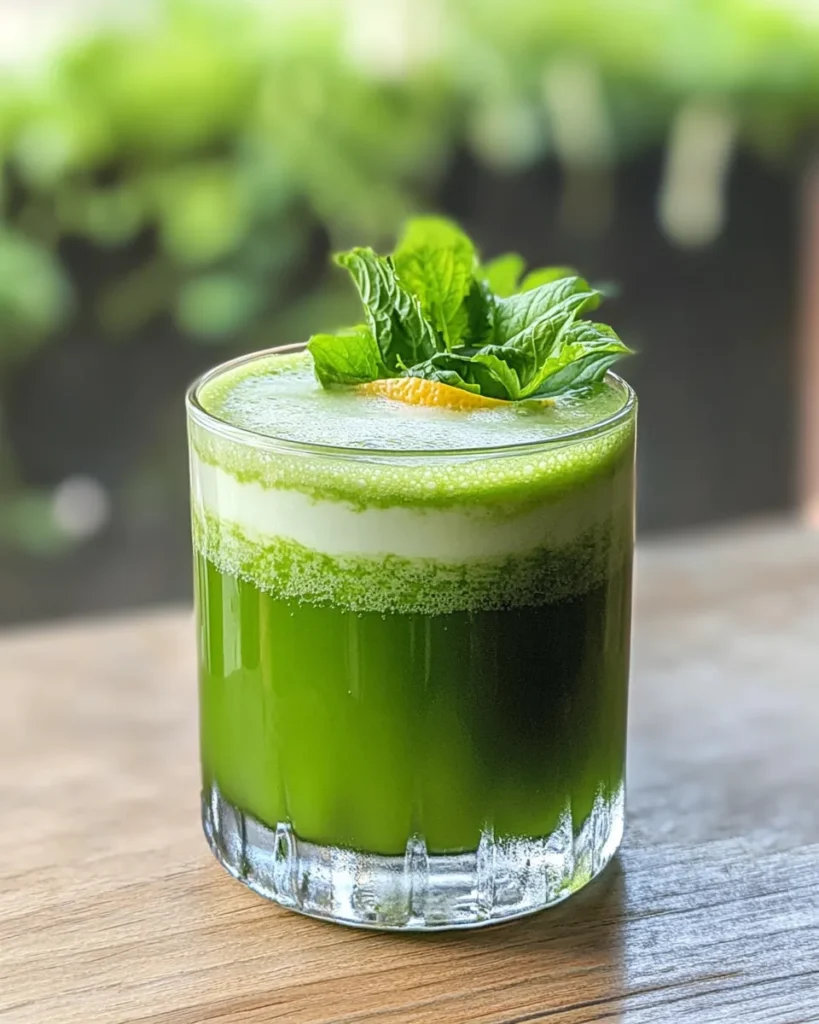
| Ingredient | Flavor Role | Functional Benefit | How to Source & Store |
|---|---|---|---|
| Ceremonial Matcha (1 tsp) | Umami backbone; vivid jade color | Catechins for antioxidant support; L-theanine for calm focus | Buy from harvest-date-stamped brands; keep in opaque tin in fridge |
| Yuzu Zest (½ tsp) & Juice (1 tsp) | Bright citrus lift; spa-like aroma | Vitamin C, limonene for mood | Look for fresh or frozen peel in Asian markets; freeze extra zest |
| Fresh Ginger (3–4 slices) | Warm kick; slight sweetness | Helps digestion, eases nausea, boosts circulation | Store unpeeled root in freezer; slice frozen for zero waste |
| Pink Himalayan Salt (¼ tsp) | Subtle minerality; rounds flavors | Adds sodium, potassium, magnesium; curbs sugar cravings | Choose fine-grind for quick dissolution; keep dry |
| Filtered Water or Coconut Water (1 cup) | Liquid canvas | Hydration; coconut water adds natural electrolytes | Use 175 °F (80 °C) water for hot brew |
| Raw Honey (1–2 tsp, optional) | Gentle sweetness; floral undertone | Lower glycemic spike vs. refined sugar; antioxidants if unfiltered | Opt for local raw honey; store at room temp |
Ingredient tip: If yuzu is hard to find, substitute equal parts Meyer lemon and a dash of grapefruit zest for similar sweet-bitter complexity without overpowering the Japanese Mounjaro recipe aroma.
Matcha-Infused Japanese Mounjaro Recipe
Using high-grade matcha defines the character of your Japanese Mounjaro recipe. Always sift before whisking; microscopic clumps ruin mouthfeel and mute color. Whisk briskly in an “M” motion for 15 seconds until the surface shines like jade velvet.
Cold-Brew Japanese Mounjaro Recipe
Slow overnight extraction tames ginger heat and coaxes matcha’s sweeter notes, creating a chilled Japanese Mounjaro recipe that tastes like citrus cloud and green-tea cream—no bitterness, no grit.
Equipment Guide
- Bamboo Whisk (Chasen) — traditional, yields micro-foam.
- Fine-Mesh Sieve — essential for lump-free matcha.
- Stainless Saucepan or Gooseneck Kettle — enables 175 °F precision.
- Glass Mason Jar (1 L) — perfect for cold-brew batches.
- Digital Thermometer — keeps water in the flavor sweet-spot.
- Ceramic Chawan or 12-oz Mug — wide surface area aids whisking and aroma release.
Minimalist gear keeps the Japanese Mounjaro recipe ritual stress-free and repeatable.
Step-by-Step Instructions
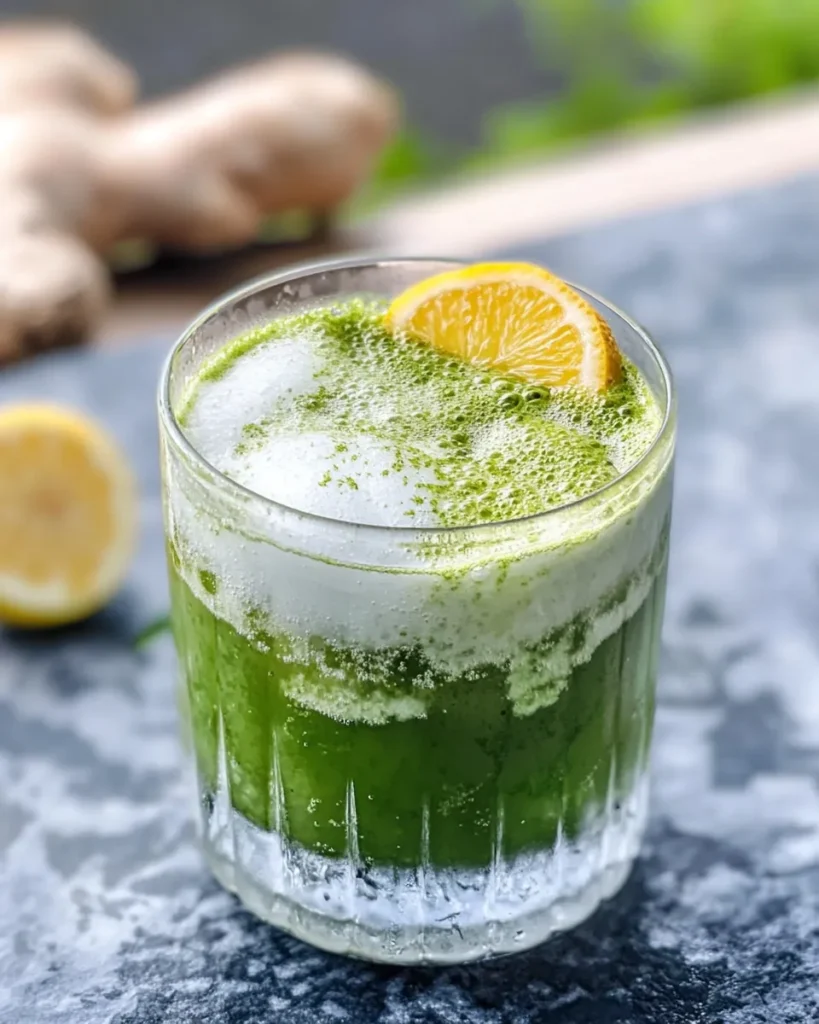
Hot Japanese Mounjaro Recipe
- Build the base
Pour 1 cup filtered water into a saucepan with 3 ginger slices and ¼ tsp pink Himalayan salt. Warm over medium-low until wisps of steam rise; do not boil. - Infuse citrus
Add ½ tsp yuzu zest, cover, and steep 2 minutes so oils bloom throughout the liquid. - Whisk matcha
Sift 1 tsp ceremonial matcha into a pre-warmed chawan. Add 2 Tbsp 175 °F water; whisk briskly until frothy. - Combine & finish
Strain the ginger-yuzu infusion into the matcha bowl, swirl gently, and add 1 tsp yuzu juice. Taste and drizzle raw honey if desired. Enjoy your steaming Japanese Mounjaro recipe while foam crowns the surface.
Cold-Brew Japanese Mounjaro Recipe
- Layer flavors
In a 1-liter jar place 4 ginger slices, ½ tsp yuzu zest, and ⅜ tsp pink Himalayan salt. - Add matcha slurry
Whisk 2 tsp matcha with ¼ cup cool water until smooth; pour into jar. - Top & steep
Fill almost to rim with chilled filtered (or coconut) water, seal, shake once, and refrigerate 8–10 hours. - Strain & serve
Pass through a sieve into an ice-filled glass, add 1 tsp yuzu juice, sweeten to taste, and savor a chilled Japanese Mounjaro recipe that feels like green tea sorbet in liquid form.
Taste Customization & Flavor Variations
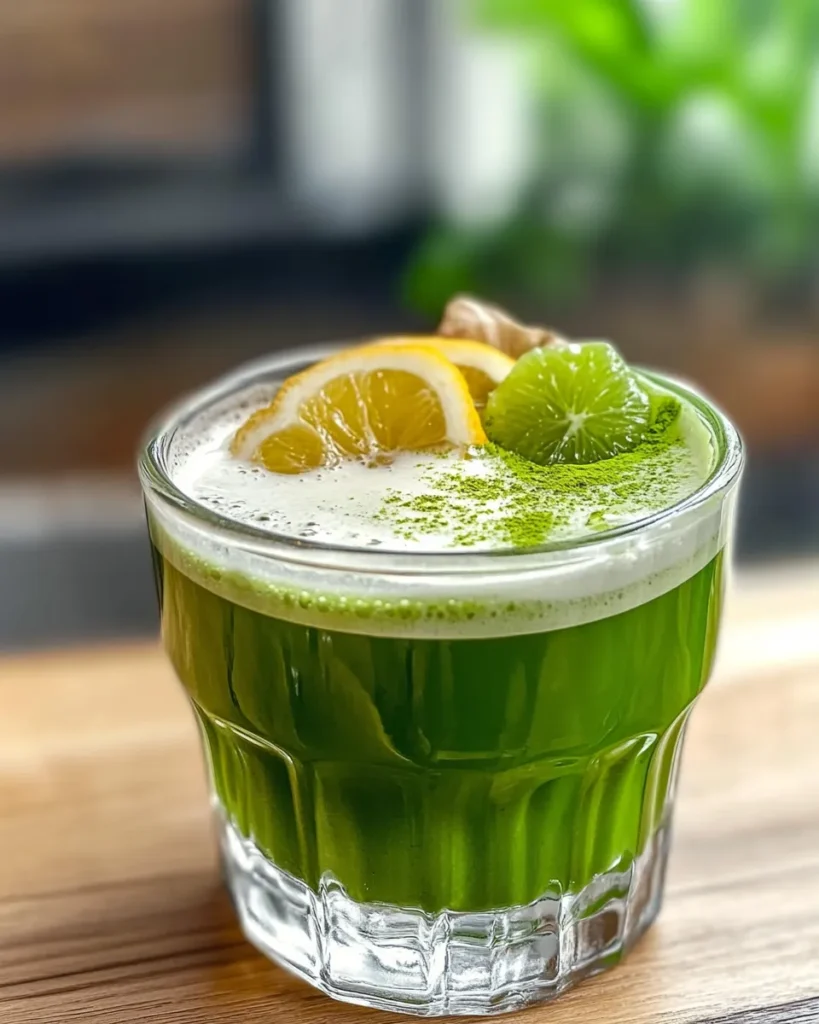
| Variation | Method | Flavor Personality |
|---|---|---|
| Sakura Blossom | Swap yuzu juice for 1 tsp pickled cherry-blossom brine | Floral, lightly salted springtime |
| Winter Spice | Simmer a cinnamon stick with ginger | Cozy, mulled-tea warmth |
| Protein Latte | Blend in ½ scoop unflavored whey | Creamy, satiating post-workout |
| Keto Refresh | Replace honey with 3 drops liquid stevia | Ultra-low carb, sharper citrus edge |
| Sparkling Shaken | Shake ½ cup cold-brew with ½ cup plain seltzer | Mocktail fizz, zero sugar |
Each riff honors the minimalist ethos of the Japanese Mounjaro recipe while keeping your palate surprised.
Nutrition & Health Benefits
| 10-oz Unsweetened Serving | Amount |
|---|---|
| Calories | 10 |
| Carbohydrates | 2 g |
| Natural Sugars | 0 g |
| Sodium | 92 mg |
| Potassium | 75 mg |
| Vitamin C | 8 % DV |
| EGCG Catechins | ~60 mg |
Adding 2 tsp raw honey increases calories to 45 and sugars to 9 g.
Matcha antioxidants: Epigallocatechin gallate (EGCG) is linked to improved metabolic health and cellular protection.
Electrolytes: Himalayan salt plus optional coconut water deliver balanced sodium-to-potassium ratios that support nerve signaling and hydration.
Gingerols & limonene: Compounds in ginger and yuzu may reduce inflammation and uplift mood, making the Japanese Mounjaro recipe a functional beverage without synthetic additives.
Pro Tips & Troubleshooting
- Bitter brew? Water was likely too hot or matcha too old. Aim for fresh harvest, store chilled.
- Clumps in the cup? Always sift matcha and use vigorous whisking; a handheld frother works in a pinch.
- Flat flavor? Add a microscopic pinch more salt; sodium accentuates sweetness and aroma.
- Foam won’t form? Use softer water or a dash of cold water before whisking to help proteins trap air.
- Time-pressed mornings? Pre-slice ginger and zest yuzu into silicone ice-cube trays—just drop a cube into water, heat, and proceed.
Serving & Pairing Ideas
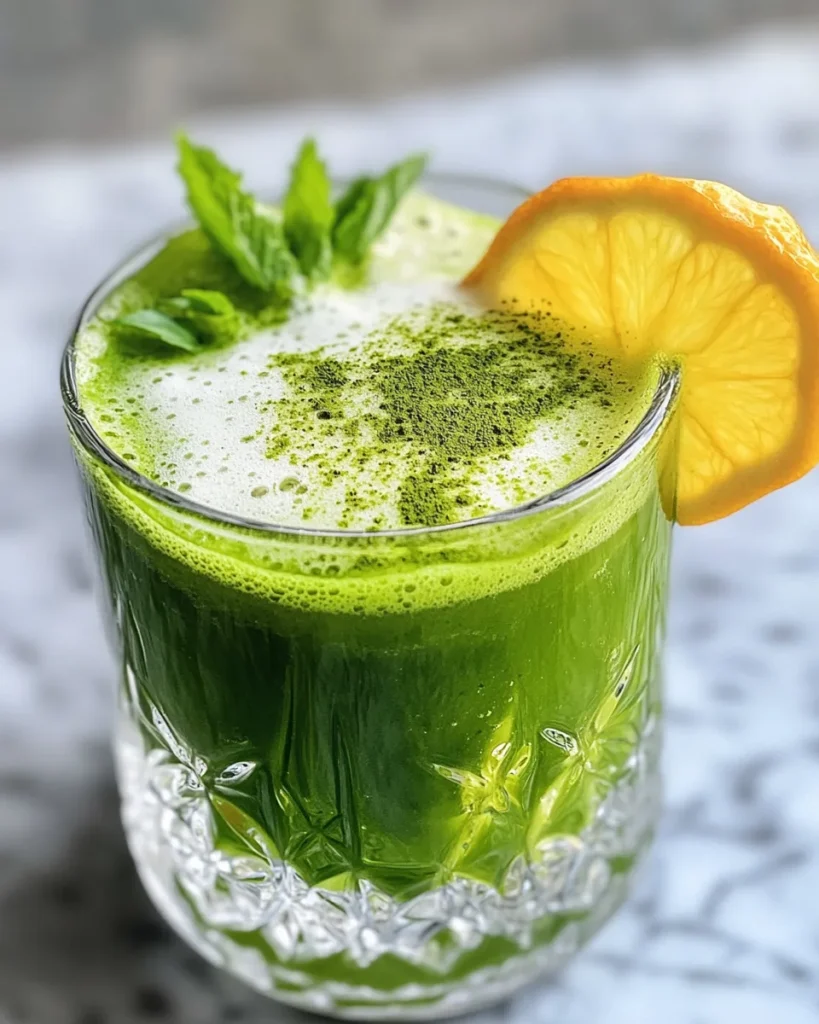
- Mindful Sunrise: Enjoy a hot Japanese Mounjaro recipe beside avocado-miso toast; umami and citrus play off creamy fats for all-day satiety.
- Focus Fuel: Replace your afternoon latte with an iced version; L-theanine keeps focus sharp without caffeine crash.
- Gym Companion: Sip 30 minutes pre-workout; salt balances sweat losses, matcha perks endurance.
- Dessert Affogato: Pour a 2-oz hot concentrate over vanilla mochi ice cream—bittersweet, floral, unforgettable.
- Holiday Welcome Drink: Serve sparkling shaken Japanese Mounjaro recipe in champagne flutes; garnish with a single yuzu twist.
Meal-Prep & Storage
| Form | Fridge Life | Freezer Life | Best Practice |
|---|---|---|---|
| Hot-brew concentrate | 3 days | — | Cool, store in dark glass |
| Cold-brew batch | 4 days | 2 months (ice cubes) | Shake before pouring |
| Matcha ice cubes | — | 2 months | Drop into smoothies or seltzer |
Oxidation dulls color and antioxidants, so brew smaller, fresher batches when possible.
Sustainability & Ethical Sourcing
Choosing organic, shade-grown matcha from small Japanese cooperatives supports biodiversity and preserves heritage farming. Yuzu groves in Tokushima and Kochi are often family-run; fair pricing keeps rural communities vibrant. Ginger shipped by sea (instead of air) reduces carbon footprint. And because the Japanese Mounjaro recipe uses every scrap—zest, juice, and ginger peel for stock—kitchen waste stays minimal.
Success Stories & Community Notes
- Mai, Osaka: “Replacing my 3 p.m. coffee with a cold Japanese Mounjaro recipe stopped sugar crashes. I even stopped late-night snacking.”
- Lucas, Sydney: “I brew a sparkling version before surf sessions. Electrolytes plus matcha keep me sharp on the waves.”
- Dr. Aiko Tanaka, Endocrinologist: “The drink’s balanced mineral profile and L-theanine-caffeine synergy make it a smart alternative to energy drinks.”
- Jaya, Mumbai: “I can’t get yuzu, so I mix orange-lemon-grapefruit zest. Still tastes divine and bright.”
FAQ
What ingredients are in the Japanese Mounjaro?
A classic Japanese Mounjaro recipe blends ceremonial matcha, fresh ginger, yuzu zest and juice, pink Himalayan salt, and filtered water, with raw honey as an optional sweetener.
What do doctors say about Japanese Mounjaro?
Doctors who focus on nutrition praise the drink’s antioxidants, gentle stimulant profile, and natural electrolytes. They recommend up to two servings daily alongside whole-food meals.
Does Japanese Mounjaro drink work?
When paired with balanced eating and movement, the Japanese Mounjaro recipe can support focus, hydration, and modest metabolic lift. It isn’t a miracle cure, but users report steadier energy and fewer sugar cravings compared with coffee.
Can I drink it at night?
If you’re sensitive to caffeine, opt for the cold-brew Japanese Mounjaro recipe before 3 p.m. The smoother extraction has slightly less caffeine but still offers L-theanine-driven calm.
Is the salt necessary?
Yes. The pinch of pink Himalayan salt not only replaces electrolytes but also balances matcha’s natural bitterness, making the flavor pop.
Final Thoughts
Ritual builds resilience, and the Japanese Mounjaro recipe is ritual perfection: quick to craft, layered to taste, and kind to body and planet. Whisk a steaming bowl before journaling, shake a chilled bottle after Pilates, or drop jade matcha cubes into sparkling water on humid afternoons—each sip anchors mindfulness and nudges metabolism in the gentlest way. Embrace the pause, inhale ginger-yuzu steam, and let the balanced calm of a thoughtfully brewed Japanese Mounjaro recipe guide every vibrant step of your wellness journey.

